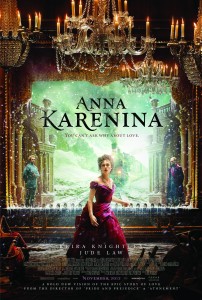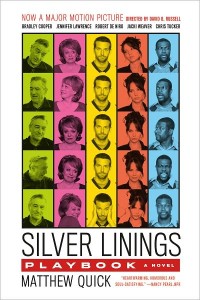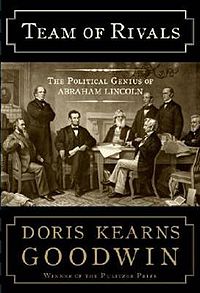Despite all of my best intentions, I find myself publishing this post a day later than I had originally planned. Was it the week-long Washington Break that kept me from finishing it on time? The unseasonably cold Georgia weather that I was exposed to at home? The pile of assignments that I happened to remember once I returned back to Lexington? No, I am late with this post for one simple reason: the Academy Awards. I couldn’t help myself; the ceremony came on my roommate’s tiny television screen, and I was hooked. While I always resolve (and fail) to see all of the “Best Picture” nominations before the winners are announced, I can nonetheless appreciate the nominees simply due to the reputation of the Academy and its members.
 This particular Oscars season, I was struck by the number of acclaimed films that were adapted from literature. I know what you’re thinking: it isn’t exactly news that our movie theaters have recently been inundated with book-turned-films. Just look at the success of Stephenie Meyer’s Twilight Saga or J.K. Rowling’s Harry Potter series on the big screen. However, these hype-surrounded, box office hits differ greatly from the films that were recognized this past weekend. The Academy Awards celebrates the absolute best in the craft of film-making: the most vivid cinematography; the best costume design; the most powerful acting performances; the most well-adapted screenplay. When I see that Leo Tolstoy’s novel Anna Karenina (1877) has been nominated for an Academy Award, I can rest assured that the director Joe Wright has succeeded in creating his own work of art from Tolstoy’s great piece of literature, which is something that cannot be said for every film that is adapted from literature. With Oscar’s seal of approval, I know that Anna Karenina didn’t miss the mark.
This particular Oscars season, I was struck by the number of acclaimed films that were adapted from literature. I know what you’re thinking: it isn’t exactly news that our movie theaters have recently been inundated with book-turned-films. Just look at the success of Stephenie Meyer’s Twilight Saga or J.K. Rowling’s Harry Potter series on the big screen. However, these hype-surrounded, box office hits differ greatly from the films that were recognized this past weekend. The Academy Awards celebrates the absolute best in the craft of film-making: the most vivid cinematography; the best costume design; the most powerful acting performances; the most well-adapted screenplay. When I see that Leo Tolstoy’s novel Anna Karenina (1877) has been nominated for an Academy Award, I can rest assured that the director Joe Wright has succeeded in creating his own work of art from Tolstoy’s great piece of literature, which is something that cannot be said for every film that is adapted from literature. With Oscar’s seal of approval, I know that Anna Karenina didn’t miss the mark.
Th e Academy Award nominations have always represented what our culture considers to be the best examples of film in any given year. However, I have recently realized that these acknowledgments can also speak volumes about our literary culture. From biography to fantasy to classic literature, the films nominated this year were adapted from literature of different genre, time period, and style. I have already spoken of Anna Karenina, but it wouldn’t do to forget Victor Hugo’s original novel Les Misérables (1862), which first inspired the Broadway musical on which this past year’s film is based. Similary, the acclaim surrounding certain fantasy adaptations proves that these types of films aren’t just for kids anymore. Yann Martel’s beautifully written fantasy adventure novel Life of Pi (2001) flourished under the supervision of “Best Director” winner Ang Lee, and the first installment of J.R.R. Tolkein’s beloved story The Hobbit (1937) introdu
e Academy Award nominations have always represented what our culture considers to be the best examples of film in any given year. However, I have recently realized that these acknowledgments can also speak volumes about our literary culture. From biography to fantasy to classic literature, the films nominated this year were adapted from literature of different genre, time period, and style. I have already spoken of Anna Karenina, but it wouldn’t do to forget Victor Hugo’s original novel Les Misérables (1862), which first inspired the Broadway musical on which this past year’s film is based. Similary, the acclaim surrounding certain fantasy adaptations proves that these types of films aren’t just for kids anymore. Yann Martel’s beautifully written fantasy adventure novel Life of Pi (2001) flourished under the supervision of “Best Director” winner Ang Lee, and the first installment of J.R.R. Tolkein’s beloved story The Hobbit (1937) introdu ced children and adults to Middle Earth. On a different spectrum, author Matthew Quick treats the more serious topic of mental illness in his novel Silver Linings Playbook (2008), upon which the “Best Picture” nominated film of the same name is based. However, the novel was not the only literary form to be recognized at the Academy Awards ceremony. Also up for the Oscar for “Best Picture,” the critically-acclaimed film Lincoln was based in part by Pulitzer-prize winning historian Doris Kearns Goodwin’s biography Team of Rivals: The Political Genius of Abraham Lincoln (2005). In fact, four of the nine films nominated in the “Best Picture” category were adapted from literature.
ced children and adults to Middle Earth. On a different spectrum, author Matthew Quick treats the more serious topic of mental illness in his novel Silver Linings Playbook (2008), upon which the “Best Picture” nominated film of the same name is based. However, the novel was not the only literary form to be recognized at the Academy Awards ceremony. Also up for the Oscar for “Best Picture,” the critically-acclaimed film Lincoln was based in part by Pulitzer-prize winning historian Doris Kearns Goodwin’s biography Team of Rivals: The Political Genius of Abraham Lincoln (2005). In fact, four of the nine films nominated in the “Best Picture” category were adapted from literature.
I can only hope that the literary presence in this year’s ceremony will continue to grow in following years, encouraging others to crack open a book as often as they frequent the movie theater. Maybe then I’ll have to be even more ambitious with my Academy Awards goal. Who knows, next year I may have to watch and read each of the nominations. I might actually be able to keep that resolution.
